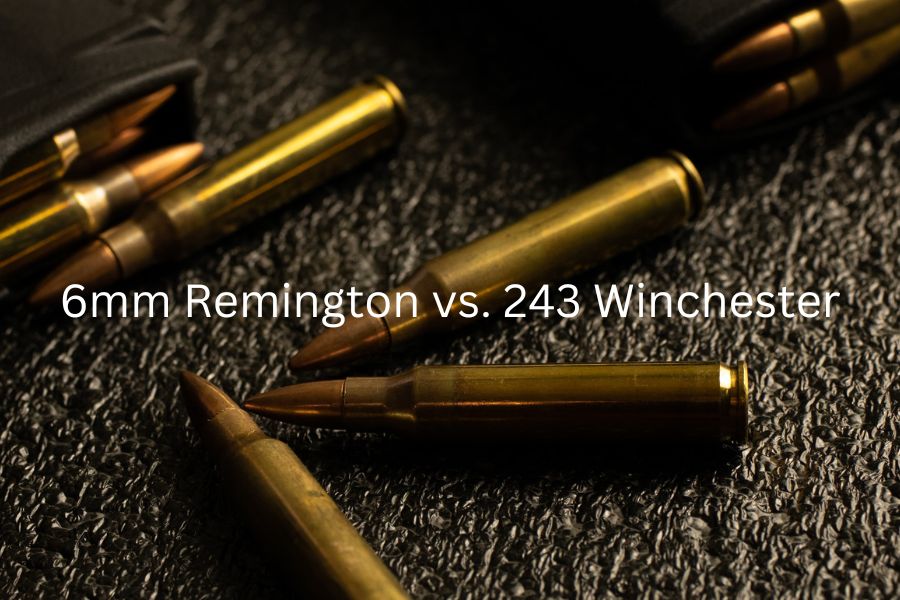When it comes to selecting a cartridge for hunting, long-range shooting, or target shooting, there are several factors to consider, such as accuracy, velocity, bullet weight, recoil, and more. Two popular cartridges for these purposes are the 6mm Remington and the 243 Winchester. While they share many similarities, they also have some key differences that can make one more suitable for certain situations than the other. In this article, we’ll take an in-depth look at both cartridges, compare them, and help you decide which one might be the best fit for you.
Here is the short answer:
The 6mm Remington has a slight edge in terms of velocity and energy, while the 243 Winchester has a wider variety of factory loads available and produces less recoil. Ultimately, the choice between the two will come down to personal preference and specific use case.
Now that we have looked at the short answer, we can closer at each cartridge, their ballistics, and see how they compare in-depth.
An In-Depth Look at the 6mm Remington
The 6mm Remington cartridge was introduced in 1955 by Remington Arms Company as a necked-down version of the .257 Roberts cartridge. It quickly became popular for varmint and predator hunting, as well as for target shooting.
The cartridge uses a 243-inch diameter bullet and has a case length of 2.494 inches, with an overall length of 3.25 inches. It has a standard bullet weight range of 70 to 105 grains, with velocities ranging from 2,500 to 3,400 feet per second (fps). The cartridge has a moderate recoil, making it a popular choice for shooters who don’t want to deal with heavy recoil.
One of the advantages of the 6mm Remington is its flat trajectory and excellent long-range accuracy. It also produces excellent energy at longer ranges, making it a good choice for medium-sized game like deer or antelope at longer distances. However, it may not have the stopping power for larger game.
Here is a ballistics chart of the 6mm Remington with a 100-grain jacketed soft point:
| range (YD) | drop (IN) | wind drift (IN) | velocity FPS | energy ft-lb |
| 0 | -1.5 | 0 | 3100 | 2134 |
| 50 | -0.3 | 0.2 | 2962 | 1947 |
| 100 | 0 | 0.8 | 2827 | 1775 |
| 150 | -0.8 | 1.8 | 2697 | 1615 |
| 200 | -2.9 | 3.4 | 2571 | 1468 |
| 250 | -6.2 | 5.3 | 2448 | 1331 |
| 300 | -11 | 7.9 | 2329 | 1204 |
| 350 | -17.4 | 11 | 2212 | 1087 |
| 400 | -25.6 | 14.8 | 2100 | 979 |
| 450 | -35.8 | 19.2 | 1990 | 879 |
| 500 | -47.9 | 24.1 | 1883 | 787 |
An In-Depth Look at the 243 Winchester
The 243 Winchester cartridge was introduced in 1955 by Winchester Repeating Arms Company as a commercial version of the 6mm Lee Navy military cartridge. It was designed for varmint hunting, but quickly became popular for deer and antelope hunting as well.
The cartridge uses a 243-inch diameter bullet and has a case length of 2.045 inches, with an overall length of 2.71 inches. It has a standard bullet weight range of 55 to 105 grains, with velocities ranging from 2,800 to 3,500 fps. The cartridge has a moderate recoil, making it a popular choice for shooters who don’t want to deal with heavy recoil.
One of the advantages of the 243 Winchester is the variety of factory loads available. Shooters can choose from a wide range of bullet weights and styles, making it versatile for different types of hunting and shooting. It also produces less recoil than many other cartridges of similar power, making it a popular choice for beginners or those who are sensitive to recoil.
Here is ballistics chart of the 243 Winchester with a 100-grain soft point bullet:
| range (YD) | drop (IN) | wind drift (IN) | velocity FPS | energy ft-lb |
| 0 | -1.5 | 0 | 2960 | 1945 |
| 50 | -0.2 | 0.2 | 2826 | 1774 |
| 100 | 0 | 0.9 | 2697 | 1615 |
| 150 | -1 | 2 | 2571 | 1467 |
| 200 | -3.3 | 3.6 | 2448 | 1331 |
| 250 | -7 | 5.7 | 2329 | 1204 |
| 300 | -12.4 | 8.4 | 2213 | 1087 |
| 350 | -19.6 | 11.8 | 2101 | 980 |
| 400 | -28.7 | 15.8 | 1991 | 880 |
| 450 | -39.8 | 20.3 | 1885 | 789 |
| 500 | -53.6 | 25.9 | 1783 | 706 |
An In-Depth Comparison
In terms of performance, both the 6mm Remington and the 243 Winchester are excellent cartridges for varmint hunting, small game hunting, and even some big game hunting at close ranges. However, they have slightly different strengths and weaknesses.
The 6mm Remington is known for its accuracy and flat trajectory, making it a popular choice for long-range varmint hunting. It also has a higher velocity and more energy at longer ranges than the 243 Winchester. On the other hand, the 243 Winchester has a slightly flatter trajectory at shorter ranges and is more readily available in factory loads.
In terms of recoil, both cartridges are relatively mild, making them great options for younger or smaller-framed hunters. However, the 243 Winchester may have a slight edge in this category due to its smaller case capacity and lighter bullets.
When it comes to availability and cost, the 243 Winchester is much more widely available and typically less expensive than the 6mm Remington. It’s also easier to find factory ammunition for the 243 Winchester, although handloading is always an option for both cartridges.
In terms of versatility, both cartridges can be used for a variety of hunting applications, but the 243 Winchester is often considered a more versatile cartridge due to its availability in lighter and heavier bullet weights, making it suitable for everything from varmints to deer-sized game.
Conclusion
In conclusion, the 6mm Remington and the 243 Winchester are both excellent cartridges with slightly different strengths and weaknesses. The 6mm Remington may have an edge in accuracy and long-range performance, while the 243 Winchester is more widely available, more versatile, and has a slight edge in recoil. Ultimately, the choice between the two will come down to personal preference and the intended use of the cartridge.

